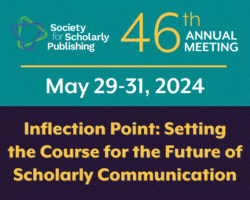A clever visual abstract or infographic can be the difference between a research paper having widespread impact or limited reach. While infographics are a great way of conveying information to a reader, making an infographic isn’t exactly easy, and there is limited training for scientists available. To combat this, Mind the Graph, part of CACTUS Communications, has launched an eBook to help researchers communicate science visually: The ultimate guide to scientific infographics. The eBook can be downloaded for free here.
Global scientific research output has grown by between 8 and 9% annually over the past several decades. In the biomedical field, that growth means we now see over one million papers uploaded to PubMed each year — approximately two papers every minute. Making research stand out in such a competitive market is challenging, The Economist estimates the average paper receives just 1.64 citations, a minimal return on an endeavour that might take years and thousands of dollars to complete.
Using infographics can make a research paper more eye-catching, increasing the chances it is shared and read. For example, data published in the Journal of Plastic, Reconstructive and Aesthetic Surgery suggests that simply including a visual abstract can make a paper 6.5 times more memorable, while achieving 8 times more social media shares and 3 times as many article downloads.
For many a researcher, however, making an infographic can be a challenge. Training on the topic sparse and it’s not a skill every scientist has had the chance to practice. That’s where The ultimate guide to scientific infographics comes in; this handy eBook is designed to take researchers through the process of making effective infographics, step by step, start to finish.
“When making an impactful infographic there are three main things to think about,” explained Fabricio Pamplona, founder of Mind the Graph. “The first is your concept, it has to be precise to give your infographic a clearly defined purpose. After that, success lies in how the diagram is organized and the artistic style you decide to go with.”
As well as explaining these three core principles, the guide includes examples of successful infographics so that researchers can visualise exactly what it means to implement them.
To download The ultimate guide to scientific infographics, click here. To get started with communicating science visually Mind the Graph website and explore its extensive illustration gallery for free.



Join the Conversation
You must be logged in to post a comment.